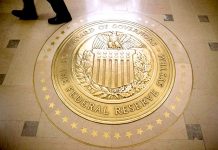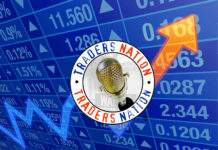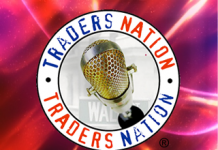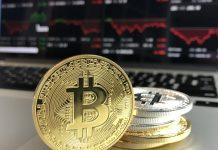Authored by Dr. Pavel Kravchenko
Do follow at distributedlab.com and tokend.org
For many years, people used to believe that the Earth consisted of an amalgam of four elements – earth, fire, water and air. It took until nearly 1750 for scientists to realize that fire isn’t an element, but the result of a process.
Later, in 1869, Dmitri Mendeleev unveiled his Periodic Table of Elements, which showed which chemical elements could actually exist, including those not present here on Earth. Mendeleev’s work led to a purposeful search and a synthesis of elements, resulting in breakthroughs in many different industries.
There’s a feeling that people today are doing the same with digital assets – naming them as traditional cryptocurrencies, ICO tokens, utility tokens etc. This leads to the confusion for the media and the wider crowd.
They start to believe that everything containing crypto – or token – is magic and possesses some kind of new features and monetary model. Regulators are the last to catch up, sometimes allowing everything that looks innovative, without deep analysis of the matter.
Defining some criteria of digital asset classification will move forward the whole industry and simplify the job of investors and regulators.
Definitions and preconditions
A digital asset is anything that exists in binary format, and comes with the right to use it.
Digital assets are scarce – meaning that at any particular moment of time there can be only one defined owner (or group of owners) of the asset.
A token is an accounting unit that represents its owner’s balance in a designated asset.
Principles of classification
There are five processes in a digital accounting system, which may have at least three states (centralized, decentralized, not possible), and which can be managed by one or separate roles:
- Governance
- Custody
- Issuance and distribution
- Transaction processing
- Audit
Different combinations of the ways these processes are managed lead to the different types of digital assets (which we call the distributed periodic table).
Examples
These are the most common for now or established terms.
Cryptocurrency
A network that performs the issuance and initial distribution of a currency, in addition to processing transactions in a decentralized way, using a secure, provable mathematical algorithm.
All five processes are managed by this algorithm, which is run independently by each participant. The key property of a cryptocurrency is the level of decentralization (the number of participants, and the correlation between their decisions).
Another important property is permissionless participation, which requires a censorship-free system.
The extreme conditions for cryptocurrency are:
- Undefined number of participants-validators:
- who are fully anonymous
- who have no reputation
- and whose transactions are fully private.
Good examples are proof-of-work-based currencies such as bitcoin and monero.
Central bank currency
A system with all five processes centralized and managed by a central bank, in which digital currency is pegged to a national currency on a 1:1 ratio.
Digital currency
In some systems, processes such as validation of transactions, fee set-up and updates can be handled by the decentralized network of users – while currency issuance and initial distribution is managed by a centralized organization.
Custody is not applicable, because there is no collateral at all.
Good examples are Ripple, Stellar, IOTA.
Commodity-backed tokens
A commodity is an item produced to satisfy wants or needs. Commodity-backed tokens represent ownership rights in a particular amount of a commodity. Tokens are managed in a system with centralized governance, custody and issuance. These processes are performed by a service provider, or by the custodian of a physical commodity.
One token is always backed by a fixed quantity of the commodity, and the 1:1 ratio is guaranteed by a designated party.
Examples are the U.S. dollar prior to 1971, a token which represented gold, or warehouse receipts – in these cases, processing and audit is done in a centralized way too.
An example from the crypto world would be Tether, whose processing is decentralized.
Equity tokens
A security is a fungible financial instrument that represents some type of financial value.
Equity represents ownership in a company or participation in its revenue stream. Security tokens represent ownership of an underlying security, or a share in a cash flow generated by the system.
Tokens are managed in a system with centralized governance, custody and issuance. These processes are performed by a depository, or by a company itself. One token always represents a certain number of shares, or a percentage of cash flow. Processing can be done in a centralized way by a depository.
An example from the crypto world would be DAO tokens, whose processing is decentralized.
Accounting tokens
Accounting tokens represent something that makes sense to account, yet doesn’t make sense to transfer.
Governance, issuance, custody and audit are centralized. Identity, reputation, and ratings are examples of such assets.
Web-of-trust identities belong to this category, although in that case issuance, custody and audit are decentralized.
Digital collectibles
A collectible is any object regarded as being of value or interest to a collector.
These objects are unique and non-fungible. Token represents ownership of a particular object. Governance and issuance are centralized.
CryptoKitties are examples of such assets.
Utility tokens
Utility is a quality of an object’s usefulness. Utility tokens represent the right to use system functionality. The role of utility tokens is to make system usage simpler than it was without them, which is true under certain conditions.
Utility tokens provide several functions – as internal currency, accumulation of system’s value, or accounting. In the long run, utility tokens have to fragment into divisions – digital currency, security tokens, accounting tokens. Governance and issuance are centralized.
How to determine the type of a digital asset
Here are some questions to ask to figure out which category a token belongs in:
- Does the token represent a designated asset?
- is the asset fungible?
- does the provenance matter?
- Is emission of the token is predefined by a mathematical algorithm (constitution)?
- is there a process of changing the constitution by the users?
- Does it make sense to transfer tokens between owners?
- Does token ownership represent participation in profits (the value or business model) generated by the system?
- Does the system have a particular owner who is providing the service or is guaranteeing custody of an underlying asset?
- Does any transaction with the token affect all the participants in the system?
- Does token ownership represent a share in a particular business?
- Does it make sense if the token’s price rises indefinitely?
- how would the fees in the system be affected?
- if the system provides a service, would this become too expensive?
- Can the system function without a token?
- can it use other tokens (cryptocurrencies, etc.) for payments and rewards?
- does the system need its own monetary policy (balancing supply and demand)?
- if the token is used for the DDoS attack prevention, are there alternative ways of protection?
The analysis
Prior to the emergence of bitcoin, it was believed that all the five processes could only be handled in a centralized way.
Bitcoin, however, showed that it was perfectly possible to set up decentralized financial systems.
When we said that each process can be executed in three ways (centralized, decentralized, or process is not possible), the outcome is that there are hundreds of possible combinations.
Let’s explore some of them:
- All the processes are centralized – this is fine, and it gives us a central bank currency.
- All the processes are decentralized – an option that gives us bitcoin.
- The first four of the processes are decentralized, but audit is impossible – such systems exist, such as the cryptocurrency monero (or zcash).
- The first four of the processes are decentralized, but audit is centralized. This is possible – for example, if the the initial secure parameters for zcash hadn’t been destroyed (which some suspect to be the case).
- Governance and issuance are centralized, but custody, processing and audit are decentralized – a case we see in Ripple or Stellar.
- All processes are centralized, but transactions are impossible – this is PKI (a centralized public key infrastructure).
- Governance is centralized, custody, issuance, audit are decentralized, but transactions are impossible – this corresponds to identity on blockchain.
- Transactions are impossible, all the rest is decentralized (audit might not be possible) – web-of-trust identities.
- Custody is impossible, Issuance and other processes are centralized – land registry.
- Custody is impossible; issuance and governance are centralized; processing and audit are decentralized – land registry on a blockchain.
Strange new worlds
We are on the edge of a major breakthrough when we will see new new business models and application of tokenization. They will become possible due to technological improvements of cryptographic tools (efficient homomorphic encryption, short and fast zero-knowledge proofs, secure multi-party computation, quantum computing), mesh networks, networking infrastructure, etc.
These new business models will largely rely on new synthesized types of assets and will entail significant economic and social shifts. It’s important to have a precise vocabulary to make sense of it all.
Republished with permission: Dr. Pavel Kravchenko holds a PhD in technical sciences and is the founder of Distributed Lab.
Periodic table image via Shutterstock | Originally published at CoinDesk














